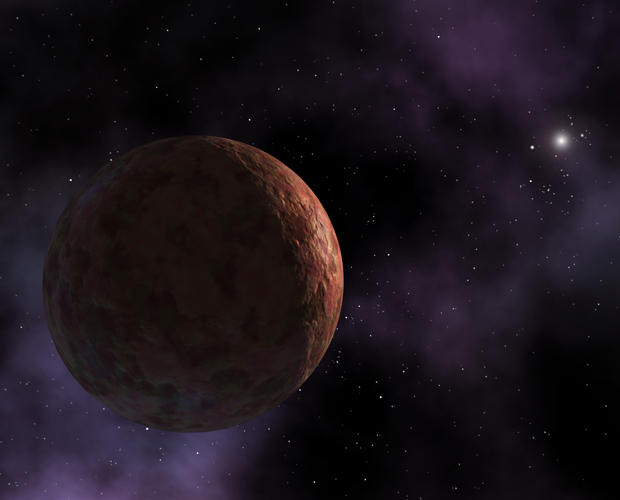
 |
|
|
|
| Average distance from the Sun | 11,369,438,172 km / 76 AU — 140,173,204,837 km / 937 AU |
| Diameter | 1,800 km |
| Mass | 1e21 kg |
| Orbital period around the Sun | about 11,400 Earth years / 4,161,000 Earth days |
| Number of moons | unknown |
 |
|
| On March 15, 2004, a team of NASA astronomers announced the discovery of Sedna—a large planetary body located within the Oort Cloud. Sedna is in an orbital distance that is roughly three times farther out than that of Pluto or Neptune. Based on its current distance, brightness, and presumed ability to reflect light, Sedna has been estimated to be more than half the diameter of Pluto and may be larger than any other planetary body found since Pluto. Sedna is the second most reddish planetary body in the Solar System, after Mars. | |
 Our Solar System
Our Solar System
Our solar system is located on the edge of a spiral arm called Orion’s Arm, and is one-half to two-thirds of the way (28,000 light-years) from the center of our Milky Way galaxy.The Sun, Sol
The Inner Planets
Mercury
Venus
Earth
The Moon
Mars
The Asteroid Belt
Dwarf planet, Ceres
Asteroid, Ida
Asteroid, Vesta
Asteroid, Eros
The Outer Planets
Jupiter
Saturn
Uranus
Neptune
The Kuiper Belt
Dwarf planet, Pluto
Dwarf planet, Eris
The Oort Cloud
Dwarf planet, Sedna
Comet Halley
Comet Hale-Bopp
Glossary of Terms